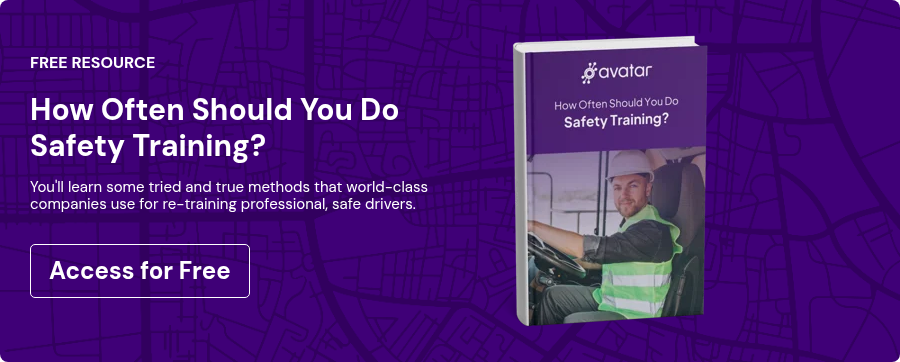I got a call the other day from a client who’s worked with us for many years. We first met him back in 1999. At the time he was senior vice president of safety for Greyhound Lines and, at the time, he had about 3,000 drivers.
We did a lot of work with him, but he left for an even larger company where he had 10,000 drivers. Once again, he engaged us to develop custom education and training to reduce the frequency of losses in the company.
This client has a keen appreciation for the benefits of outcome-based driver training, but in his new job, he only had 500 drivers and a limited budget. He couldn’t afford to develop a massive custom curriculum to include 70 or 80 driver safety topics.
He knew he needed something, and his request was simple: 'What do I absolutely need to include in my safety training to get better results?'
"He knew he needed something, and his request was simple: 'What do I absolutely need to include in my safety training to get better results?'"
AvatarFleet exists to make the roads safer. We want to make sure that whatever training curriculum we provide fits best with what is within the budget of any specific client.
As I looked over the hundreds of different custom curricula we produced over the years, I saw some common themes. All of them began with LLLC, which stands for Look Ahead, Look Around, Leave Room and Communicate. And certainly, mastering these four principles would improve any driver’s skills. But are they enough? When it comes to professional drivers I don’t think so.
Professional drivers are held to higher standards. They are responsible for driving in a way that allows for the mistakes of others.
"Professional drivers are held to higher standards. They are responsible for driving in a way that allows for the mistakes of others.
Coursework on various types of situations that present additional challenges are needed to ensure that they maintain that high standard of safety while on the roads. With that said, here are five topics you should be teaching in your professional driver safety training.
1. Backing
Backing is a unique circumstance and even though it represents less than 1% of the miles driven, in most fleets it represents 20 to 25% of the accidents. Teaching this topic covers the potential dangers of backing a truck and stresses the importance of avoiding backing whenever possible.
2. Intersections
Another risky situation is intersections. These are probably the most dangerous situations a driver can face. Other drivers are going in different directions and at different speeds. Often, people are breaking the rules and failing to yield. Many aren’t even paying any attention.
3. Limited Visibility and Adverse Weather
Limited Visibility and Adverse Weather are also unique situations in deserve extra attention. Of course, the universal response to poor visibility or adverse weather is to simply slow down and leave more room, but there’s more to it than that. Differences in light, visibility and traction change the driving dynamics must be understood to avoid collisions in these situations.
4. Lane Changing
A lane changing course helps inform drivers of the correct procedures to follow when changing lanes and while merging onto and exiting a highway. The intended outcome is to reduce the rate of accidents involving lane changes.
5. Following Distance
The topic of following distance educates drivers about the importance of always using a minimum five-second following distance on dry road conditions, and discusses how to adapt to different driving conditions.
The A-Fleet has 42 web-based modules covering these subjects and many more.
Sign up for our newsletter
Get the latest articles on all things transportation delivered straight to your inbox.
Schedule a live demo

